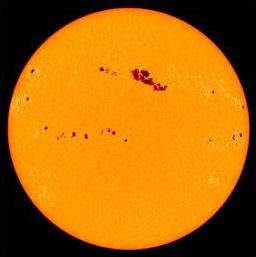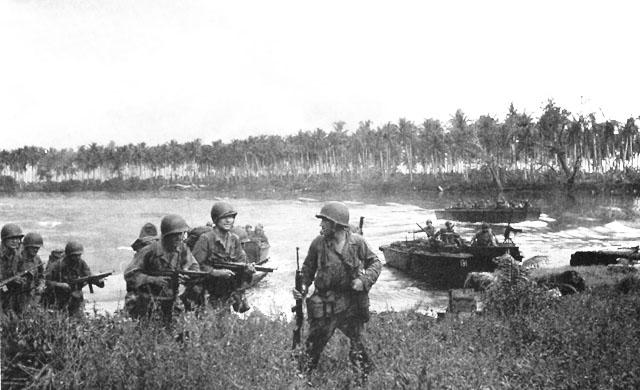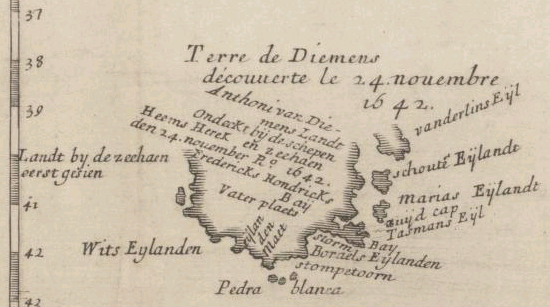|
Salomon Sweers
Salomon Sweers (15 June 1611 in Nijmegen – 2 March 1674 in Amsterdam) was a bookkeeper and a counsel for the Dutch East India Company. His younger brother was Admiral Isaac Sweers employed by the Admiralty of Amsterdam. Early life Salomon Sweers was the son of Aernout Sweerts, a member of the vroedschap, and Alida van Bronckhorst. In 1628 the family moved to Amsterdam, when his father became a representative in the East India Company. East India period Seventeen-year-old Salomon joined the East India Company VOC as a clerk. In 1632 Sweers left for the East, under the command of Antonie van Diemen, who protected him. In 1638 in Batavia he married Catharina Jans, a widow from Hoorn. Together they paid a visit to their homeland. In 1640 he undertook a second journey to Batavia, being appointed to the Council of India. Together with Antonie van Diemen, Cornelis Witsen, Cornelis van der Lijn and Joan Maetsuycker, Sweers was involved in the two expeditions of Abel Tasman. Tas ... [...More Info...] [...Related Items...] OR: [Wikipedia] [Google] [Baidu] |
Nijmegen
Nijmegen (;; Spanish and it, Nimega. Nijmeegs: ''Nimwèège'' ) is the largest city in the Dutch province of Gelderland and tenth largest of the Netherlands as a whole, located on the Waal river close to the German border. It is about 60 km south east of Utrecht and 50 km north east of Eindhoven. Nijmegen is the oldest city in the Netherlands, the second to be recognized as such in Roman times, and in 2005 celebrated 2,000 years of existence. Nijmegen became a free imperial city in 1230 and in 1402 a Hanseatic city. Since 1923 it has been a university city with the opening of a Catholic institution now known as the Radboud University Nijmegen. The city is well known for the International Four Days Marches Nijmegen event. Its population in 2022 was 179,000; the municipality is part of the Arnhem–Nijmegen metropolitan area, with 736,107 inhabitants in 2011. Population centres The municipality is formed by the city of Nijmegen, incorporating the former villages ... [...More Info...] [...Related Items...] OR: [Wikipedia] [Google] [Baidu] |
Sweers Island 02
Sweers may refer to: People * Isaac Sweers (1622–1673), Dutch vice-admiral * Salomon Sweers (1611–1674), Dutch bookkeeper and counsel for the Dutch East India Company Other * Sweers Island Sweers Island is an island in the South Wellesley Islands in the Gulf of Carpentaria, Queensland, Australia. Privately owned via a perpetual lease and with the only residents being the owners and workers at the resort, the island is within t ..., an island in Queensland, Australia * HNLMS ''Isaac Sweers'' (1940), a ''Gerard Callenburgh''-class destroyer * HNLMS ''Isaac Sweers'' (1967), a ''Van Speijk''-class frigate {{disambiguation ... [...More Info...] [...Related Items...] OR: [Wikipedia] [Google] [Baidu] |
Bookkeepers
Bookkeeping is the recording of financial transactions, and is part of the process of accounting in business and other organizations. It involves preparing source documents for all transactions, operations, and other events of a business. Transactions include purchases, sales, receipts and payments by an individual person or an organization/corporation. There are several standard methods of bookkeeping, including the single-entry and double-entry bookkeeping systems. While these may be viewed as "real" bookkeeping, any process for recording financial transactions is a bookkeeping process. The person in an organisation who is employed to perform bookkeeping functions is usually called the bookkeeper (or book-keeper). They usually write the '' daybooks'' (which contain records of sales, purchases, receipts, and payments), and document each financial transaction, whether cash or credit, into the correct daybook—that is, petty cash book, suppliers ledger, customer ledger, etc. ... [...More Info...] [...Related Items...] OR: [Wikipedia] [Google] [Baidu] |
1674 Deaths
Events January–March * January 2 – The French West India Company is dissolved after less than 10 years. * January 7 – In the Chinese Empire, General Wu Sangui leads troops into the Giuzhou province, and soon takes control of the entire territory without a loss. * January 15 – The Earl of Arlington, a member of the English House of Commons, is impeached on charges of popery, but the Commons rejects the motion to remove him from office, 127 votes for and 166 against. * January 19 – The tragic opera '' Alceste'', by Jean-Baptiste Lully, is performed for the first time, presented by the Paris Opera company at the Theatre du Palais-Royal in Paris. * February 19 – England and the Netherlands sign the Treaty of Westminster, ending the Third Anglo-Dutch War. Its provisions come into effect gradually (''see'' November 10). * March 14 – Third Anglo-Dutch War: Battle of Ronas Voe – The English Royal Navy captures the Dutch Eas ... [...More Info...] [...Related Items...] OR: [Wikipedia] [Google] [Baidu] |
1611 Births
Events January–June * February 27 – Sunspots are observed by telescope, by Frisian astronomers Johannes Fabricius and David Fabricius. Johannes publishes the results of these observations, in ''De Maculis in Sole observatis'' in Wittenberg, later this year. Such early discoveries are overlooked, however, and the first sighting is claimed a few months later, by Galileo Galilei and Christoph Scheiner. * March 4 – George Abbot is enthroned as Archbishop of Canterbury. * March 9 – Battle of Segaba in Begemder: Yemana Kristos, brother of Emperor of Ethiopia Susenyos I, ends the rebellion of Melka Sedeq. * April 4 – Denmark-Norway declares war on Sweden, then captures Kalmar. * April 28 – The ''Colegio de Nuestra Señora del Santísimo Rosario'' is established in Manila, the Philippines (later renamed Colegio de Santo Tomas, now known as the University of Santo Tomas). * May 2 – The Authorized King James Version of the ... [...More Info...] [...Related Items...] OR: [Wikipedia] [Google] [Baidu] |
South Wellesley Islands
The South Wellesley Islands is an island group and locality in the Gulf of Carpentaria within the Shire of Mornington, Queensland, Australia. The group is separate from the Wellesley Islands. Bentinck Island is the only one known to have been inhabited in the past; in the , the South Wellesley Islands were uninhabited Geography The islands, which lie in the Shire of Mornington, are (west to east): * Allen Island * Horseshoe Island * Albinia Island * Bentinck Island * Fowler Island * Sweers Island In the , the South Wellesley Islands had a population of 0 people. History Kayardild language (also known as Kaiadilt, the name of the people of Bentinck Island, also spelt Gayadilta) is a language of the Gulf of Carpentaria. The Kayardild language region includes the landscape within the local government boundaries of the Mornington Shire Council. Explorer Matthew Flinders charted the islands in 1802 and assigned European names to Bentinck Island, the island group ... [...More Info...] [...Related Items...] OR: [Wikipedia] [Google] [Baidu] |
Queensland
) , nickname = Sunshine State , image_map = Queensland in Australia.svg , map_caption = Location of Queensland in Australia , subdivision_type = Country , subdivision_name = Australia , established_title = Before federation , established_date = Colony of Queensland , established_title2 = Separation from New South Wales , established_date2 = 6 June 1859 , established_title3 = Federation of Australia, Federation , established_date3 = 1 January 1901 , named_for = Queen Victoria , demonym = , capital = Brisbane , largest_city = capital , coordinates = , admin_center_type = Administration , admin_center = Local government areas of Queensland, 77 local government areas , leader_title1 = Monarchy of Australia, Monarch , leader_name1 = Charles III , leader_title2 = Governor of Queensland, Governor , leader_name2 = Jeannette Young , leader_title3 = Premier of Queensland, Premier , leader_name3 = Annastacia Palaszczuk (Australian Labor Party (Queensland Branch), AL ... [...More Info...] [...Related Items...] OR: [Wikipedia] [Google] [Baidu] |
Papua New Guinea
Papua New Guinea (abbreviated PNG; , ; tpi, Papua Niugini; ho, Papua Niu Gini), officially the Independent State of Papua New Guinea ( tpi, Independen Stet bilong Papua Niugini; ho, Independen Stet bilong Papua Niu Gini), is a country in Oceania that comprises the eastern half of the island of New Guinea and its offshore islands in Melanesia (a region of the southwestern Pacific Ocean north of Australia). Its capital, located along its southeastern coast, is Port Moresby. The country is the world's third largest island country, with an area of . At the national level, after being ruled by three external powers since 1884, including nearly 60 years of Australian administration starting during World War I, Papua New Guinea established its sovereignty in 1975. It became an independent Commonwealth realm in 1975 with Elizabeth II as its queen. It also became a member of the Commonwealth of Nations in its own right. There are 839 known languages of Papua New Guinea, on ... [...More Info...] [...Related Items...] OR: [Wikipedia] [Google] [Baidu] |
Bismarck Archipelago
The Bismarck Archipelago (, ) is a group of islands off the northeastern coast of New Guinea in the western Pacific Ocean and is part of the Islands Region of Papua New Guinea. Its area is about 50,000 square km. History The first inhabitants of the archipelago arrived around 30–40,000 years ago. They may have traveled from New Guinea, by boat across the Bismarck Sea or via a temporary land bridge, created by an uplift in the Earth's Crust (geology), crust. Later arrivals included the Lapita people. The first European to visit these islands was Dutch explorer Willem Schouten in 1616. The islands remained unsettled by western Europeans until they were annexed as part of the German protectorate of German New Guinea in 1884. The area was named in honour of the Chancellor of Germany (German Reich), Chancellor Otto von Bismarck. On 1888 Ritter Island eruption and tsunami, 13 March 1888, a volcano erupted on Ritter Island causing a megatsunami. Almost the entire volcano fell into t ... [...More Info...] [...Related Items...] OR: [Wikipedia] [Google] [Baidu] |
New Hanover Island
New Hanover Island, (german: Neuhannover), also called Lavongai, is a large volcanic island in the New Ireland Province of Papua New Guinea. This region is part of the Bismarck Archipelago and lies at . Measuring some , it had a population of 5,000 in 1960, which increased to approximately 17,160 by 2000. In the interior the Tirpitz Range reaches a height of 2,800 feet. Culture Friedrich Ratzel in ''The History of Mankind''Ratzel, Friedrich. The History of Mankind. (London: MacMillan, 1896). URLwww.inquirewithin.biz/history/american_pacific/oceania/melanesian-ornament.htm accessed 21 October 2009. reported in 1896, when discussing Melanesian ornament, that there were luxurious feather ornament displays in New Hanover, showing much taste in the combination of forms and colours with vegetable fibres and beads on sticks. An example was a delicately formed face in feather-mosaic forming the head of a hairpin. See also *Johnson cult (so called) *List of volcanoes in Papua New Guinea ... [...More Info...] [...Related Items...] OR: [Wikipedia] [Google] [Baidu] |
Van Diemen's Land
Van Diemen's Land was the colonial name of the island of Tasmania used by the British during the European exploration of Australia in the 19th century. A British settlement was established in Van Diemen's Land in 1803 before it became a separate colony in 1825. Its penal colonies became notorious destinations for the transportation of convicts due to the harsh environment, isolation and reputation for being inescapable. Macquarie Harbour and Port Arthur are among the most well-known penal settlements on the island. With the passing of the Australian Constitutions Act 1850, Van Diemen's Land (along with New South Wales, Queensland, South Australia, Victoria, and Western Australia) was granted responsible self-government with its own elected representative and parliament. On 1 January 1856, the colony of Van Diemen's Land was officially changed to Tasmania. The last penal settlement was closed in Tasmania in 1877. Toponym The island was named in honour of Anthony van D ... [...More Info...] [...Related Items...] OR: [Wikipedia] [Google] [Baidu] |







